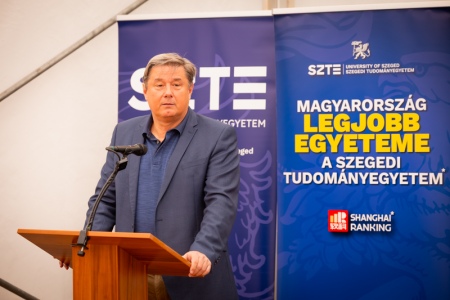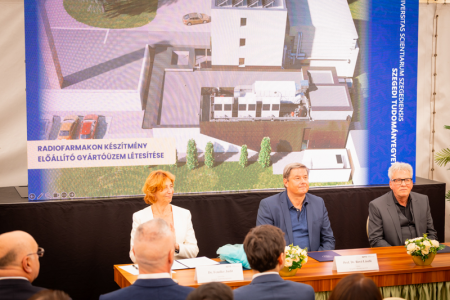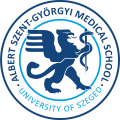University of Szeged
Albert Szent-Györgyi Medical School
Foreign Students' Secretariat
Your Education. Our Mission.

Paradigm shift in medicine: New radiopharmaceutical centre at the University of Szeged heralds potential breakthrough in cancer treatment
The University of Szeged has announced the establishment of a new, state-of-the-art radiopharmaceutical production plant.
The ceremonial laying of the foundation stone of the centre took place on Tuesday, 8 April, in the presence of Prof. Dr. László Rovó, Rector, Dr. Judit Fendler, Chancellor, and Prof. Dr. László Pávics, Head of the Department of Nuclear Medicine, in the courtyard of the Department of Nuclear Medicine.
The University of Szeged has been at the forefront of nuclear medicine research and diagnostics for decades. The uniqueness of the SZTE Regional Cyclotron and Radiopharmaceutical Supply Centre lies in the fact that it uses cyclotron technology to produce radioisotope tracers and then uses those to manufacture radiopharmaceuticals, thus raising the standard of regional care to an international level. The project will enable the SZTE to produce radiopharmaceuticals that serve diagnostic, research and educational purposes at the same time.

Radiopharmaceuticals are special radioactive drugs that contain a tiny amount of radioactive material. This allows doctors to see what is happening in the body, for example in a cancerous lesion. During imaging procedures (such as PET or SPECT scans), these substances are illuminated, so that diseases can be detected more accurately. This plant will use cyclotron technology to produce radiopharmaceuticals and contrast agents for PET/CT and SPECT/CT diagnostic and therapeutic procedures. This means that in some cases they can be used not only for diagnosis, to detect malignant tumours, but also for targeted treatment, for example to destroy tumour cells.
At the event, Prof. Dr. László Rovó recalled that although the principle of the cyclotron (which is a type of particle accelerator) was first developed by a Hungarian physicist, Sándor Gaál in 1929, patent applications were never published and therefore it did not receive international recognition. The patent was first filed by Leó Szilárd, but the world recognises Ernest Lawrence as the inventor of the cyclotron, since he was the first to build the device and was later awarded the Nobel Prize.

Prof. Dr. László Rovó emphasized that the new cyclotron device will fill a niche in Hungary. He stressed that the development represents a real paradigm shift in medicine and its impact will be felt throughout the region.

Dr. Judit Fendler said that the device opens up a huge opportunity in the training of pharmacists and doctors. ’It will also lead to significant efficiency gains in medicine, as we will be able to produce our own radiopharmaceuticals. I can see a huge demand from the market for different types of radiopharmaceuticals, which we will be able to deliver in the region in the most efficient way, at the best cost and value for money. The whole project will be self-sustaining,’ she said.
’Today is a great day in the life of the whole university, but most of all in the life of the Department of Nuclear Medicine, and frankly in my life as well,’ said Prof. Dr. László Pávics. He recalled that in the past decade the department's machinery has been renewed, a modern therapeutic facility has been built, and now the cyclotron investment completes the series of improvements. ’With this complex facility, we will achieve the best international standards,’ he said adding that the new plant will not only produce products for patient care, but will also be able to carry out research, for example, the development of new products with the help of experts from the Faculty of Pharmacy, Faculty of Science and Informatics and Faculty of Engineering.






